MLK Jr. Regional Shoreline: Birding Hotspot
By Blake Edgar
Wedged between Interstate 880 and Oakland International Airport along the eastern edge of San Leandro Bay, Martin Luther King, Jr. Regional Shoreline protects a remnant of a once-extensive tidal marsh. This habitat maintains a population of endangered Ridgway’s Rails and serves many shorebirds and water birds, especially during winter migration. This area was opened to the public by the East Bay Regional Park District in 1979 as San Leandro Bay Regional Shoreline, but in 1992 the name was changed to honor Dr. King.
You enter the park from Swan Way, although you’re more likely to spot a Canada Goose than a swan there. The road into the park passes three mounds behind a fence on the right where Burrowing Owls have been known to reside. Further along on the right, you can glimpse a larger mound in the distance, strewn with oyster shells, where East Bay Regional Park wildlife volunteers are working to create nesting habitat for Western Snowy Plovers.

More than 200 avian species have been reported on eBird from MLK Shoreline. For birders, the primary attraction here is often 50-acre Arrowhead Marsh, the park’s centerpiece and a central location for many Golden Gate Bird Alliance activities, from Eco-Education school outings and adult field trips to long-term restoration efforts.
Time for a bit of history. From a total of around 1,800 acres of tidal marsh in the late 1930s, when GGBA began advocating for the area’s preservation, a series of major development projects (including the airport, highway, and Oakland Coliseum complex) drastically reduced the wetlands. Fifty years ago, GGBA succeeded in protecting Arrowhead Marsh as a refuge.
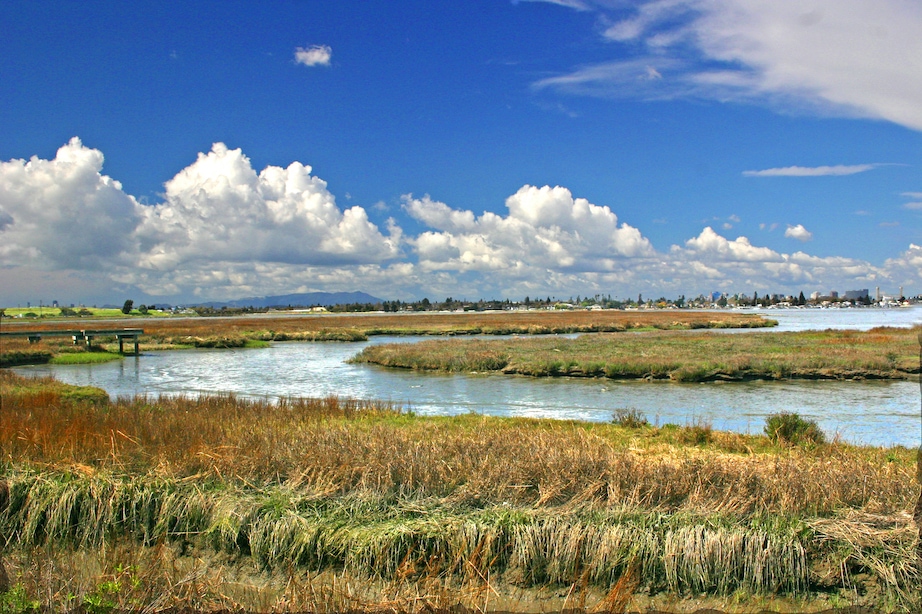
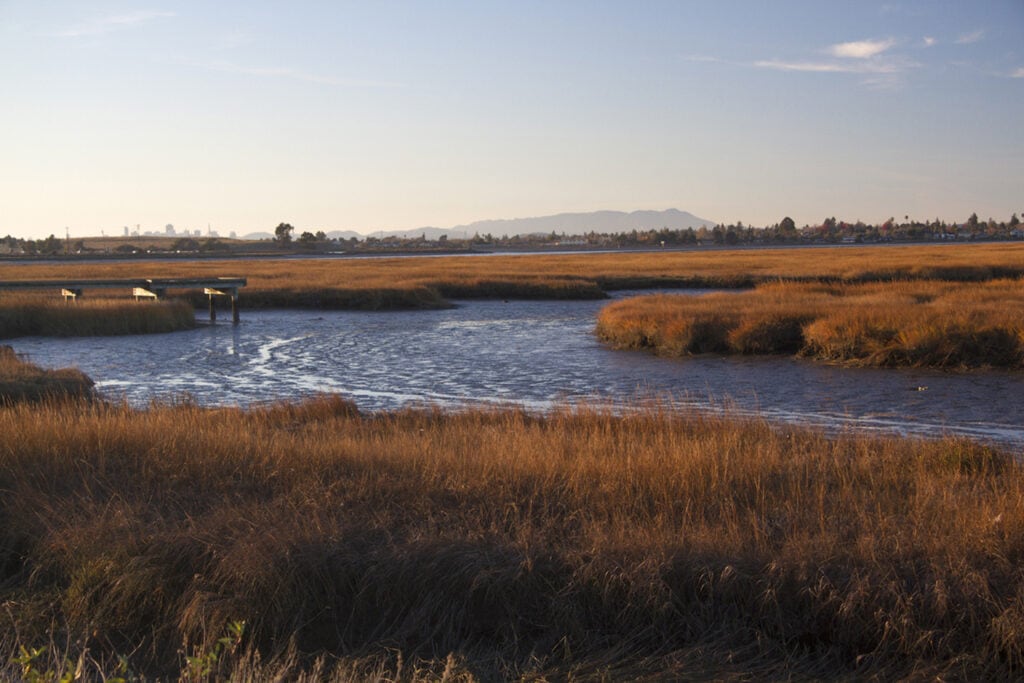
Coastal survey maps from 1855 and 1895 indicate that Arrowhead Marsh formed at some point in the interim period, possibly growing on eroded sediment that came down San Leandro Creek from the construction of Lake Chabot. For a broad, elevated perspective on the aptly named marsh, visit the viewing deck at the observation tower beside the parking lot. Then head to the path along the water’s edge, or the dock that extends out across pickleweed and cordgrass, to seek out some secretive marsh denizens.

Arrowhead harbors one of the largest remaining populations of Ridgway’s Rail, which is restricted to tidal and brackish marshes rimming San Francisco Bay. It’s been a federal endangered species since 1970 and was placed on California’s endangered list a year later. Standing alongside the marsh, you may well hear the distinctive territorial clapping call that gave Ridgway’s Rail its former common name, California Clapper Rail. Setting eyes on the furtive and cryptic bird is more challenging. Scan the clumps of reeds for a broad orange bill, and be patient.

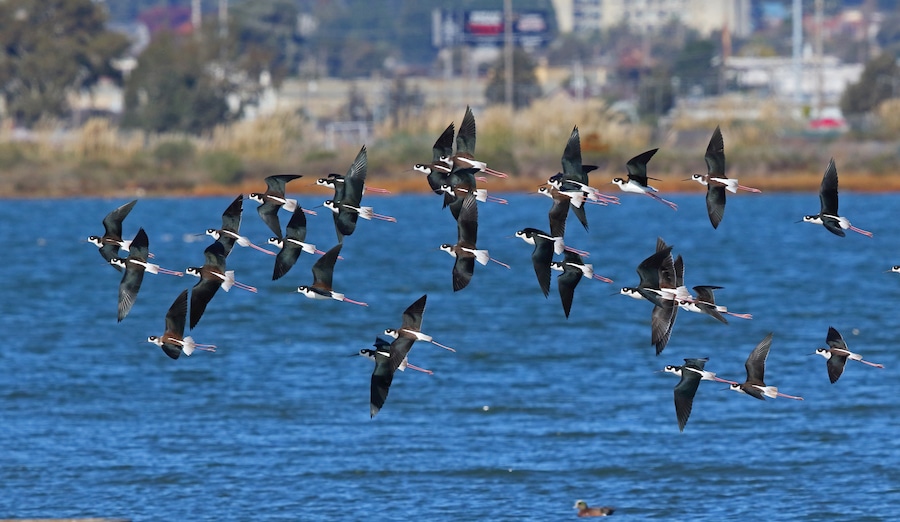
Your odds improve if your trip coincides with a high tide, when the rails have fewer places to hide. I recall one recent pre-pandemic king tide when birders and photographers flocked to Arrowhead Marsh for the chance to see a visiting Nelson’s Sparrow. While I managed to briefly see the perched sparrow, I felt more fortunate to observe a flying Virginia Rail, a paddling Sora, and four Ridgway’s Rail, including one that walked beside the boardwalk beneath a bevy of photographers. More recently, I was rewarded with an extended look as a Ridgway’s preened its feathers in plain view before vanishing into the vegetation. Such encounters can make the existence of this urban oasis, hemmed in by bland business parks, seem like a minor miracle.
Another fight to protect the marsh erupted in the 1980s, when GGBA sued the Port of Oakland to block the proposed filling of 100 acres of wetland. The eventual settlement required the Port to restore 73 acres of wetland now known as New Marsh. To visit New Marsh, go to the bridge just to the right of the parking lot. Look for egrets, herons, and ducks in the marsh channels or adjacent creek. You can stop for a view or a picnic at one of the tables on the fishing dock and continue birding along the edge of New Marsh using San Leandro Creek Trail West.
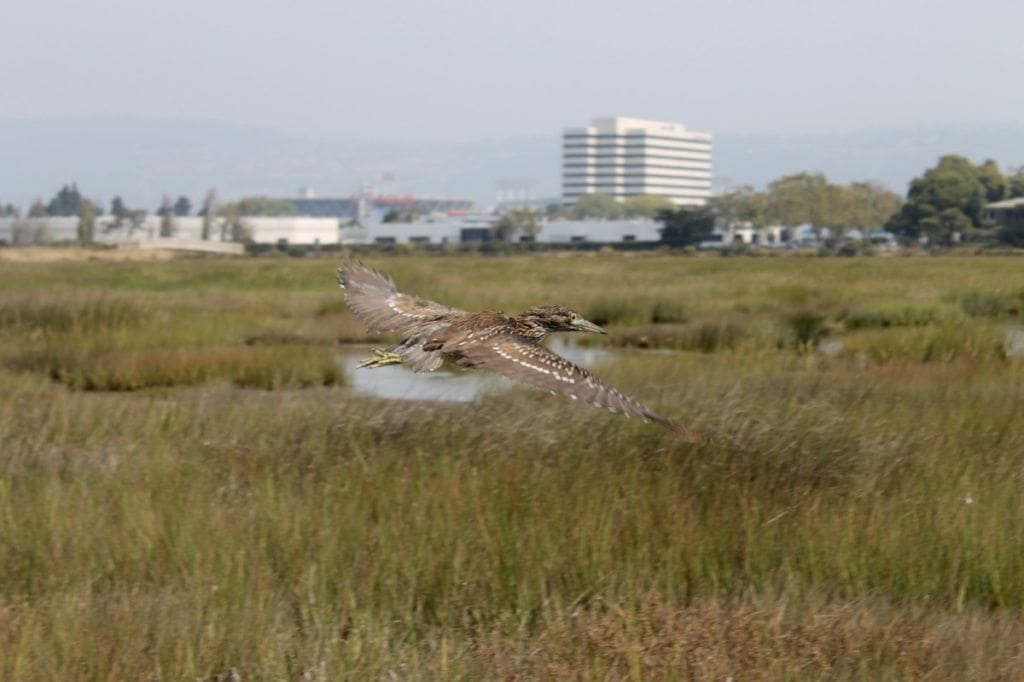
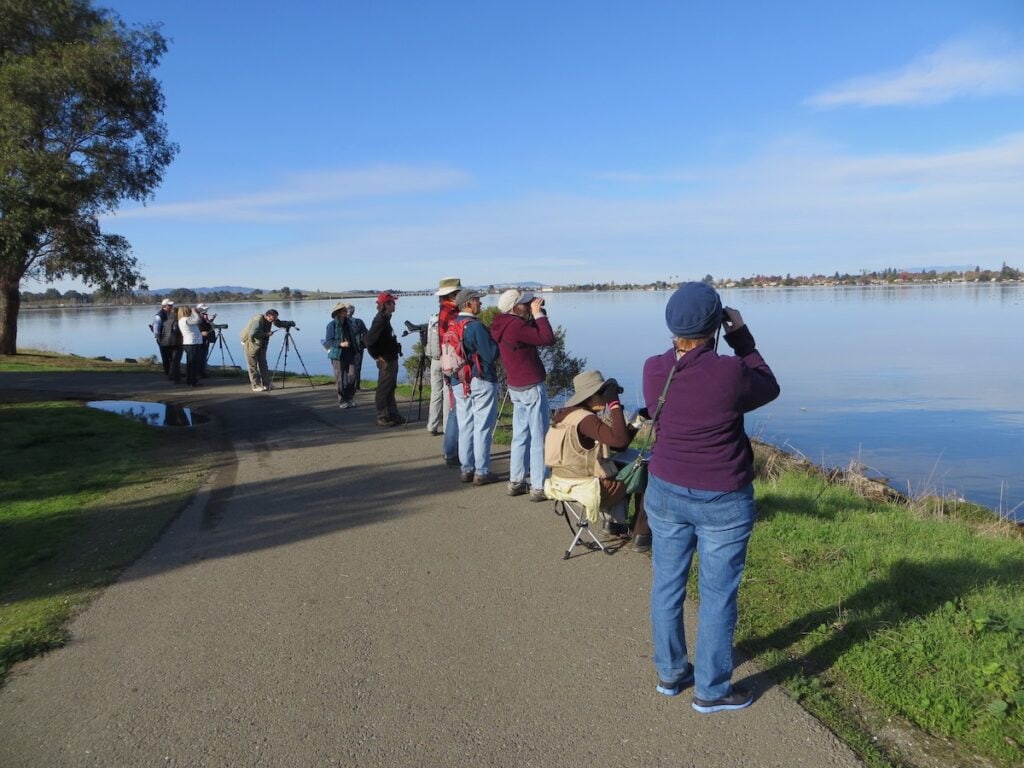
For a longer jaunt, cross the bridges over San Leandro Creek and Elmhurst Creek and continue for a little over half a mile to Garretson Point. Named for Fred Garretson, a longtime Oakland Tribune reporter who covered environmental issues pertaining to the San Francisco Bay and Delta, this spot is known for offering a trifecta of teal in winter, when you can find Cinnamon, Blue-winged, and Green-winged species. From here, you can continue another mile or more past Damon Slough along the Damon Marsh Trail, spotting American Avocet, Marbled Godwit, and other shorebirds.
If visiting inspires you to return this marsh a bit closer to its historic extent, GGBA sponsors volunteer restoration work sessions on the third Saturday morning of each month. Hundreds of native plants — including pickleweed, yarrow, alkali heath, marsh gumplant, and more — are planted each year by students and volunteers. Work sessions always include time to spot and learn about the shoreline’s birds! For details and sign up, see the Volunteer calendar on the GGBA web site.
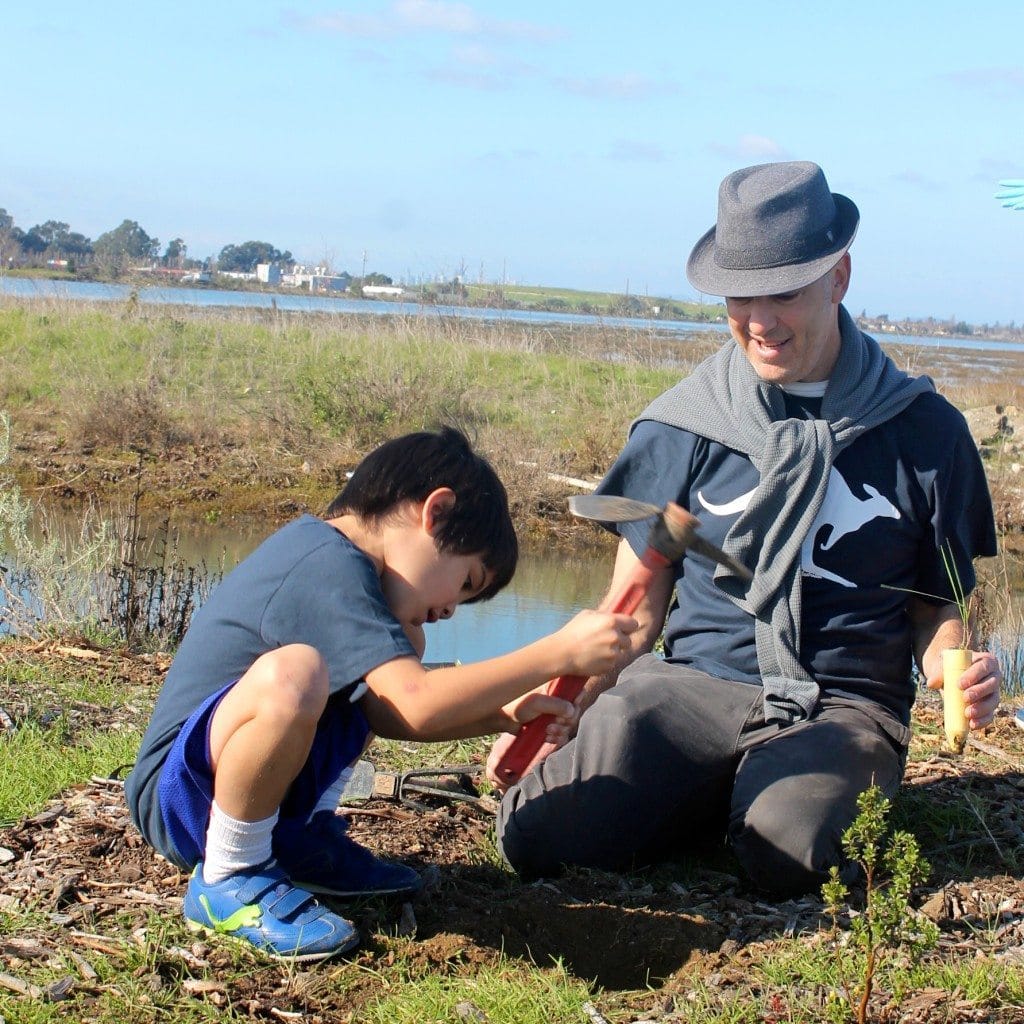
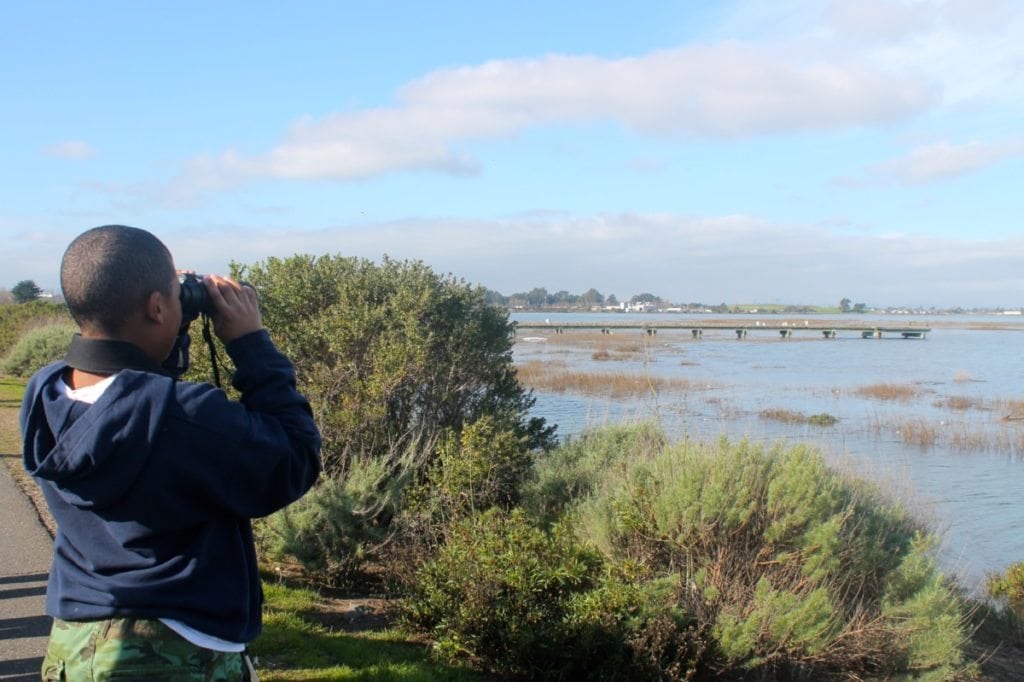
Fast Facts
Location: Enter off of Swan Way, east of Oakland International Airport
Hours/Fees: Gate opens at 8 A.M. Closing time varies by season (from 5 P.M. in winter to 9 P.M. in summer)/No fees
Dogs: Permitted on leash except in the marsh areas
Habitat: tidal marsh, mudflats, creeks, bay
Key Birds:
Year-round: Marsh Wren, Ridgway’s Rail, Sora, Virginia Rail
Summer: Barn Swallow, Black-necked Stilt, Forster’s Tern, Willet
Winter: Common Goldeneye, Greater and Lesser Scaup, Horned Grebe, Surf Scoter, plus many other ducks and shorebirds
Ease of Access: Parking is available at six staging areas adjacent to trails. The trails are paved and flat, with the exception of slight inclines on two pedestrian bridges and to reach the viewing deck of the observation tower at Arrowhead Marsh.
Getting There: From I-880 in Oakland, exit at Hegenberger Road and turn right on Hegenberger. Turn right on Pardee Drive and left on Swan Way. The entrance to the park is signed on the north side of Swan Way (and you’ve driven past it if you come to Doolittle Drive). Once through the park gate, follow the road about a half mile to its end at the Arrowhead Marsh parking area. (Do NOT rely on Google Maps, where entering “MLK Shoreline” will take you to a different and less accessible part of San Leandro Bay.)
Nearby Services: Restrooms are available under the observation tower at Arrowhead Marsh, as well as at Garretson Point Staging Area, Doolittle Staging Area, and Kingfisher parking lot. Several picnic areas can be found throughout the park.
Nearby cafes/restaurants: Several restaurants are on or near Hegenberger Road.
For more information: ebparks.org/parks/martinlking/default.htm
Blake Edgar is a science writer and editor who often hikes and birds in the East Bay regional parks. He serves on Golden Gate Bird Alliance’s Board of Directors.
